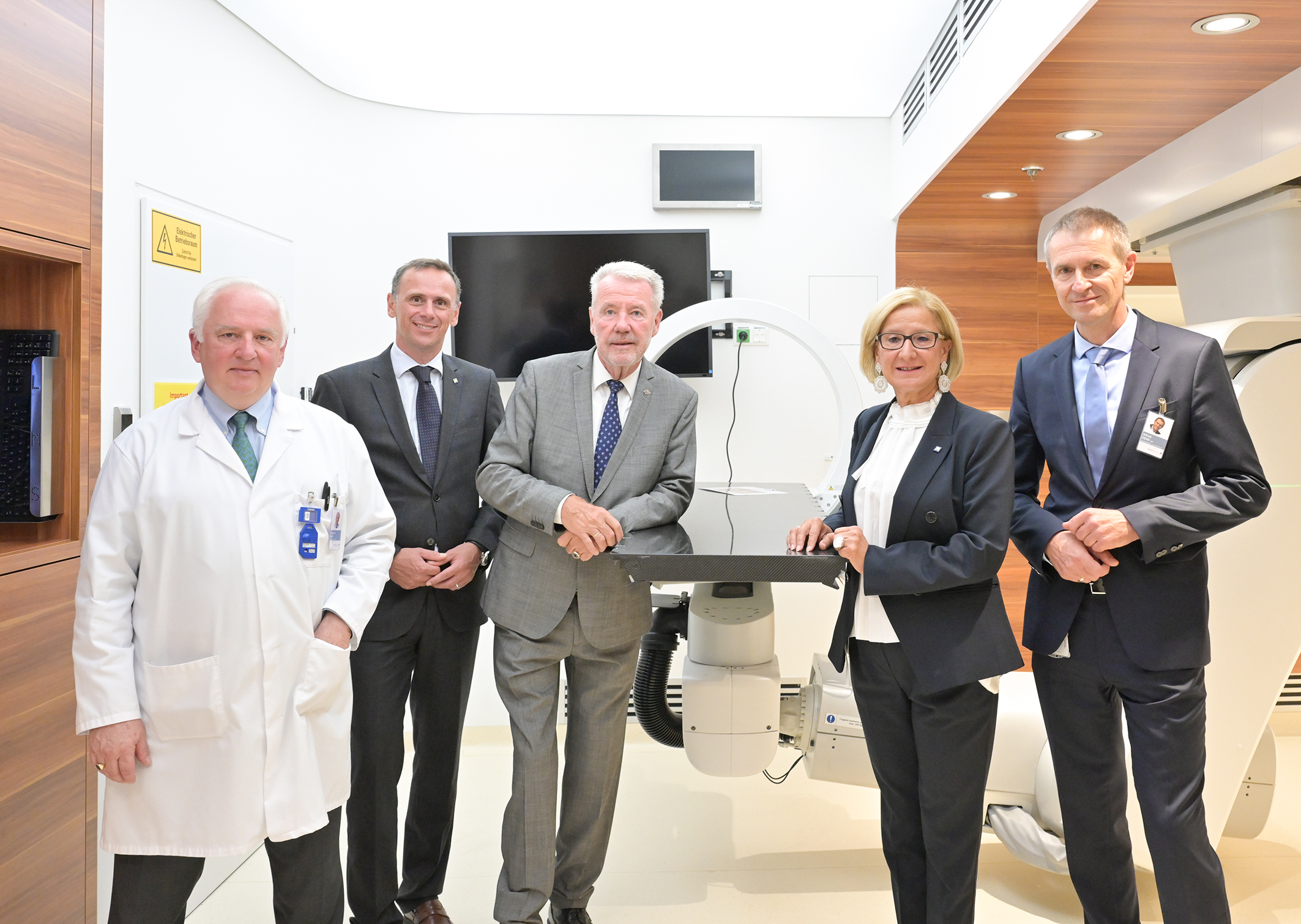New era for cancer treatment by irradiation with carbon ions
Particle therapy for cancer treatment has been successfully used at MedAustron for two and a half years. Whereas patients were previously treated exclusively with protons, carbon ion therapy is now also available. This form of treatment opens up new opportunities for tumors that were previously difficult or impossible to treat. MedAustron is thus finally joining the ranks of only six centers worldwide that can combat tumors with both protons and carbon ions.

Particle or ion therapy as a form of radiation therapy makes it possible to reduce radiation exposure in the healthy tissue surrounding the tumor and thus also to reduce the risk of side effects and long-term consequences. This applies to both protons and carbon ions – the two types of particles that are used. However, carbon ions offer additional advantages over protons because they are biologically more effective. This means that a higher biological dose of radiation can be administered to the tumor, thereby releasing more destructive power in the tumor cells.
At today’s press conference, Johanna Mikl-Leitner, Governor of the Federal State of Lower Austria, spoke of an extremely important milestone for the Lower Austrian therapy and research center:
“With the new and innovative method of carbon ion therapy, we are setting very important benchmarks in national and international cancer research. This makes MedAustron one of six centers worldwide offering “combined ion therapy”. We are very proud that MedAustron is one of the most modern centers for ion therapy and ion research in Lower Austria”.
Klaus Schneeberger, Chairman of the Supervisory Board of MedAustron and one of the center’s founding fathers, emphasized: “We can be proud and grateful that we have a center like MedAustron at our disposal. Despite some obstacles we have encountered in the course of this ambitious project, we have followed our path with the unique support of the Province of Lower Austria – and the success proves us right. With the start of carbon ion treatment, we are now fully achieving our ambitious goal of providing world-class cancer treatment to those affected.”
Medical Director Prof. Dr. Eugen B. Hug added that “particle therapy with carbon ions is one of the least available forms of therapy worldwide. Therefore, it is our declared goal and duty to intensify clinical research with these particles in order to create more evidence. We want to develop new treatment concepts and open up new indications. I am very pleased that with Dr. Fossati we have gained a physician with the necessary expertise and experience in this field”.
Dr. Piero Fossati has been with MedAustron since autumn 2017. He has previously worked at the Italian ion therapy center CNAO in Pavia and has gained experience at the pioneering centers for carbon ions in Japan. He summed up the advantages of these particles: “Irradiation with carbon ions makes it possible to maintain both the physical functions and the quality of life of patients, even with very complicated tumors”.
Initially, treatment with carbon ions focuses primarily on tumors in the head and neck region and at the base of the skull. The spectrum will be continuously expanded, for example to include gastrointestinal indications such as pancreatic or rectal carcinomas and sarcomas.
In the daily course of treatment, it makes no difference to patients whether they are treated with protons or carbon ions. Irradiation is usually carried out five days a week over a period of several weeks. In both cases, the therapy costs are covered by the Austrian social insurance institutions.
However, the expansion of the cancer treatment and research center is far from complete now that this significant milestone has been reached. In addition to the clinical and scientific goals mentioned above, there is still a lot of technical work ahead of the team. Another room has to be made “fit” for the application of the newly added particles and the last – third – treatment space has to be put into operation. Last but not least, the ongoing further development of the facility should further improve the high quality of the treatment and enable even more patients to be treated in the future.
